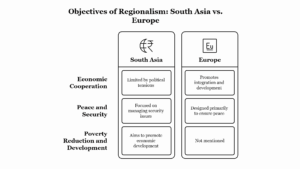The evolution of Canadian federalism is a complex and dynamic process shaped by historical, political, and social factors. It involves the development of the federal system of government in Canada, which has undergone several significant phases since its inception in the mid-19th century. Canada’s federation, formally established with the British North America Act of 1867, has evolved through a series of political, constitutional, and social changes that have shaped the structure of its government and the relationship between the federal government and the provinces. The key phases of this evolution are as follows:
1. The Confederation (1867):
The origins of Canadian federalism can be traced to the Confederation of 1867, when the British North America Act (BNA Act) was passed by the British Parliament, establishing the Dominion of Canada. The provinces of Ontario, Quebec, New Brunswick, and Nova Scotia joined together to form a federal union, with the understanding that Canada would remain a colony of Britain under a constitutional monarchy. This was a political response to various economic and security concerns, including the desire for economic integration, the need for defence cooperation, and the fear of American expansionism following the U.S. Civil War.
Key Features of Confederation:
- The federal structure was created with a clear division of powers between the federal government (responsible for national and international affairs) and the provincial governments (responsible for regional concerns like education, health, and local governance).
- The federal government was granted power over issues like defence, trade, immigration, and foreign relations, while provincial governments retained control over local matters, including education, health care, and municipal affairs.
- The Senate and House of Commons were created to represent the interests of both English-speaking and French-speaking Canadians.
The Confederation of 1867 represented a compromise between the competing interests of various regions and cultural groups, primarily English-speaking Protestants in the Ontario and Maritimes regions and French-speaking Catholics in Quebec. The BNA Act laid the foundation for the federal structure that would evolve over time, establishing the constitutional framework for Canadian governance.
2. Expansion of the Federation (1867-1949):
After Confederation in 1867, the Canadian federation expanded gradually as other provinces and territories joined the union. Each new entry added complexity to the federal structure and contributed to the ongoing evolution of Canadian federalism. The process of expansion can be divided into several key phases:
2.1 Early Expansion (1867-1905):
- Manitoba (1870): Manitoba was the first province to join Confederation after 1867, following the Red River Rebellion and the negotiation of the Manitoba Act. The province’s entry was designed to resolve issues surrounding the territory of Rupert’s Land and Red River Settlement.
- British Columbia (1871): British Columbia joined Confederation after the promise of a transcontinental railway (the Canadian Pacific Railway), which would connect the province with the rest of the country. British Columbia’s entry marked an important milestone in the development of Canada’s national economy.
- Prince Edward Island (1873): Prince Edward Island joined the union after the federal government agreed to assume the island’s debt and build a railway.
2.2 Expansion into Western Canada (1905):
The early 20th century saw the expansion of the federation into Western Canada, with the admission of Alberta and Saskatchewan in 1905. This expansion was driven by the development of the West and the federal government’s desire to control and manage the growth of the western territories. The growing population and economic potential of these provinces necessitated their inclusion in the federal system.
3. The Statute of Westminster (1931):
The Statute of Westminster (1931) was a key moment in the evolution of Canadian federalism. It marked the first significant step towards legal independence for Canada from Britain. The Statute granted Canada full legislative independence, except in areas where it chose to remain subordinate to Britain.
- The Statute of Westminster granted Canada the ability to pass laws without the need for British approval and established the principle that the British Parliament would no longer be able to legislate for Canada without its consent.
- It allowed Canada to amend its Constitution without needing approval from Britain, though changes to the Constitution were still subject to certain conditions and the royal assent from the British monarch.
The Statute of Westminster was a vital development in the constitutional evolution of Canadian federalism, marking a shift towards full self-governance while maintaining its ties to the British Crown.
4. The Patriation of the Constitution (1982):
The most significant milestone in the evolution of Canadian federalism came with the patriation of the Constitution in 1982, culminating in the Constitution Act, 1982. Prior to this, Canada’s Constitution was legally rooted in the British North America Act, 1867, which had been passed by the British Parliament. Patriation meant that Canada took full control over its constitutional framework, severing the last legal ties with Britain.
Key Features of the Constitution Act, 1982:
- The Canadian Charter of Rights and Freedoms was added, guaranteeing fundamental rights such as freedom of expression, equality rights, and minority language rights.
- Section 35 recognized and affirmed the rights of Indigenous peoples, marking a critical step toward addressing historical injustices faced by Indigenous communities.
- The amending formula was introduced, allowing Canada to amend its Constitution domestically, without requiring approval from Britain or any external authority. However, changes to the Constitution require the consent of the federal government and at least seven provinces representing 50% of the Canadian population.
Patriation and Its Impact:
- The patriation of the Constitution was a crucial step in Canada’s constitutional maturity, enhancing the autonomy of the federal government while making Canada a fully independent and self-governing nation.
- The Constitution Act, 1982, while representing a victory for Canadian federalism, also led to debates, particularly regarding the exclusion of Quebec from the constitutional changes. Quebec, a predominantly French-speaking province, refused to sign the new Constitution, highlighting the ongoing tensions between Anglophone and Francophone Canada.
5. Modern Federalism and Ongoing Evolution:
In recent decades, Canadian federalism has continued to evolve in response to various challenges, including the rise of regionalism, the Indigenous rights movement, and debates over Quebec sovereignty. Notable developments include:
5.1 Quebec Sovereignty and the 1980 and 1995 Referendums:
The Quebec sovereignty movement became a prominent issue in Canadian federalism in the 20th century. The 1976 election of the Parti Québécois, a separatist political party, led to the 1980 and 1995 referendums on Quebec independence. While both referendums were defeated, they highlighted significant tensions between Quebec and the rest of Canada.
5.2 The Rise of Western Regionalism:
Western provinces, particularly Alberta and British Columbia, have advocated for greater provincial autonomy and a more decentralized federal system. Issues related to resource management, economic development, and taxation have fueled the demand for greater control over regional affairs.
5.3 Indigenous Rights:
Indigenous rights have become a key area of focus in Canadian federalism. The government has recognized the need for meaningful consultation with Indigenous communities and has made efforts to address historical injustices through measures like land claims agreements, the Truth and Reconciliation Commission, and increased self-government arrangements.
Conclusion:
The evolution of Canadian federalism reflects the changing dynamics of the country’s political, social, and economic realities. From its confederation in 1867, through the Statute of Westminster (1931), to the patriation of the Constitution (1982), Canadian federalism has continuously adapted to new challenges. As Canada moves forward, federalism remains a critical part of the country’s governance, ensuring that provincial and territorial governments maintain a strong voice in the national framework while accommodating the diverse needs and aspirations of all regions and groups, including Indigenous peoples and Quebec.







Leave a Reply